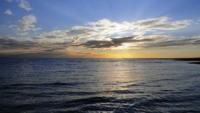You are here
Islands and bays of Mangyshlak.

Walk on islands of Caspian Sea Kazakhstan.
“The northeastern shores of the Caspian Sea have never been surveyed with the attention they deserve due to their geographical position. Very few of the sailors, and then in passing, looked into these deserted places. Not a single naturalist has visited the shores included between Guryev and Stary Mangyshlak for over 900 versts. The space is great and all the more important because it belongs to the lands that serve as the key to our future trade and political ties with Central Asia. Although a closer inspection of the country gives little hope for direct economic settlements or colonies, but with regard to the military and commercial, it can, in all fairness, gain the attention of the government."
Grigory Silych Karelin.
Mangyshlak unique natural sights.
Shown on the maps of the Caspian Sea in 1731 (F.I.Soimonov) and 1796 (A.I. Nogayeva), Tyuleniy Island in the northern part of the sea appears in the Kolodkin atlas as a bank, and Tyub-Karagan Bay is called Karagan Bay.
On the northeastern coast of the Caspian, where the low-lying, saline coast of the Buzachi Peninsula gradually turns to the east, A. Ye. Kolodkin mapped the vast Dead Kultuk Bay. Today this dry bay of the Caspian Sea is Komsomolets.
And even earlier this bay was called the Tsesarevich Bay. An offshoot of this bay to the south is the now dry Kaidak bay. In the "Hydrographic Description and Guidelines for Navigation in the Caspian Sea", published in 1877 under the leadership of Captain Second Rank N.L. Pushchin, it is written about this gulf: "...near Prorva, the coast deviates to the east, forming the turns to the south-west and together with the Buzachi peninsula forms the Kaidak Bay.
At the very turn of the coast, the Novo - Aleksandrovskoe fortification was arranged for the development of our trade with Central Asia. There are very few fishermen in this gulf, and this point is not suitable for trade, because, despite the close distance to Khiva compared to other points, it is inaccessible from the sea through the shallow Gulf of Tsesarevich.
The very area chosen for the construction of the fortress turned out to be unhealthy. Therefore, the Novo-Aleksandrovskoe fortification was moved from 1846 to Tyub-Karagan, where it still exists in the name of the Aleksandrovskii fort ”.
AE Kolodkin's atlas in the northern part of the Caspian Sea shows the "Kozey Podgorny Bank". In subsequent years, this bank turned into Morskoy Island. The name was preserved on the map of the Caspian Sea dated 1861. The island, apparently, got this name because it is far out into the sea.
In the northern part of the Caspian Sea, A. E. Kolodkin plotted a shoal on the map and designated it as the "Clean Bank". This jar has long been known to the Volga fishermen, who recognized it by the disgusting smell of soil that stuck to the lot when measuring the depth of the sea.
In 1884, N. Filippov, the compiler of the pilot of the Caspian Sea, wrote that this bank is known among the common people under such a name, which is inconvenient to reproduce in print, and therefore the hydrographers gave it a more decent name - "Clean".
In 1832, Grigory Silych Karelin was appointed head of a large expedition to explore the northeastern shores of the Caspian. By this time, Russia was firmly entrenched in the Transcaucasus. And in the east of the Caspian, in particular in Central Asia, where there were three large state associations - the Kokand and Khiva Khanates and the Bukhara Emirate, Russia's policy was dictated, on the one hand, by the growing demand for new markets and sources of raw materials for the developing capitalist industry, and with on the other hand, the aggravation of contradictions between Russia and England in the Middle East.
The offensive of Russia in Central Asia was strengthened by the fact that England also sought to seize the Central Asian market. In order to prevent the influence of Britain and other states in Central Asia, Russia had to strengthen its position in the east of the Caspian by building military forts.
This was the main reason for equipping the expedition of G. S. Karelin to the eastern coast of the Caspian Sea in 1832. GS Karelin himself wrote in the expedition magazine: “The northeastern shores of the Caspian Sea have never been surveyed with the attention that they deserve due to their geographical position.
Very few of the sailors, and then in passing, looked into these deserted places. Not a single naturalist has visited the shores included between Guryev and Stary Mangyshlak for over 900 versts. The space is great and all the more important because it belongs to the lands that serve as the key to our future trade and political ties with Central Asia.
Although a closer inspection of the country gives little hope for direct economic settlements or colonies, in terms of military and commercial it can throughout justice to gain the attention of the government." Scientific goals were also set before the expedition.
It was envisaged to study the mouth of the Emba River, study the Kazakhs - Adayevs who lived on the Caspian coast from Guryev to Kenderlinsky Bay, and clarify the reasons for the shallowing of the Caspian Sea.
Authority:
Duman Zhuldyzbayev.







